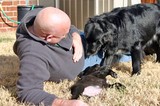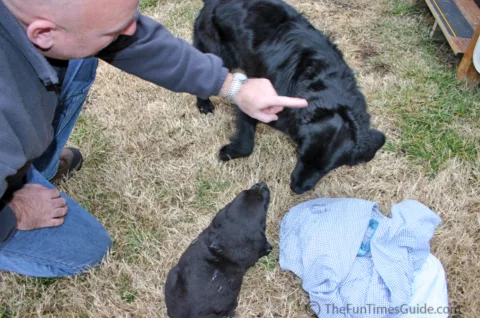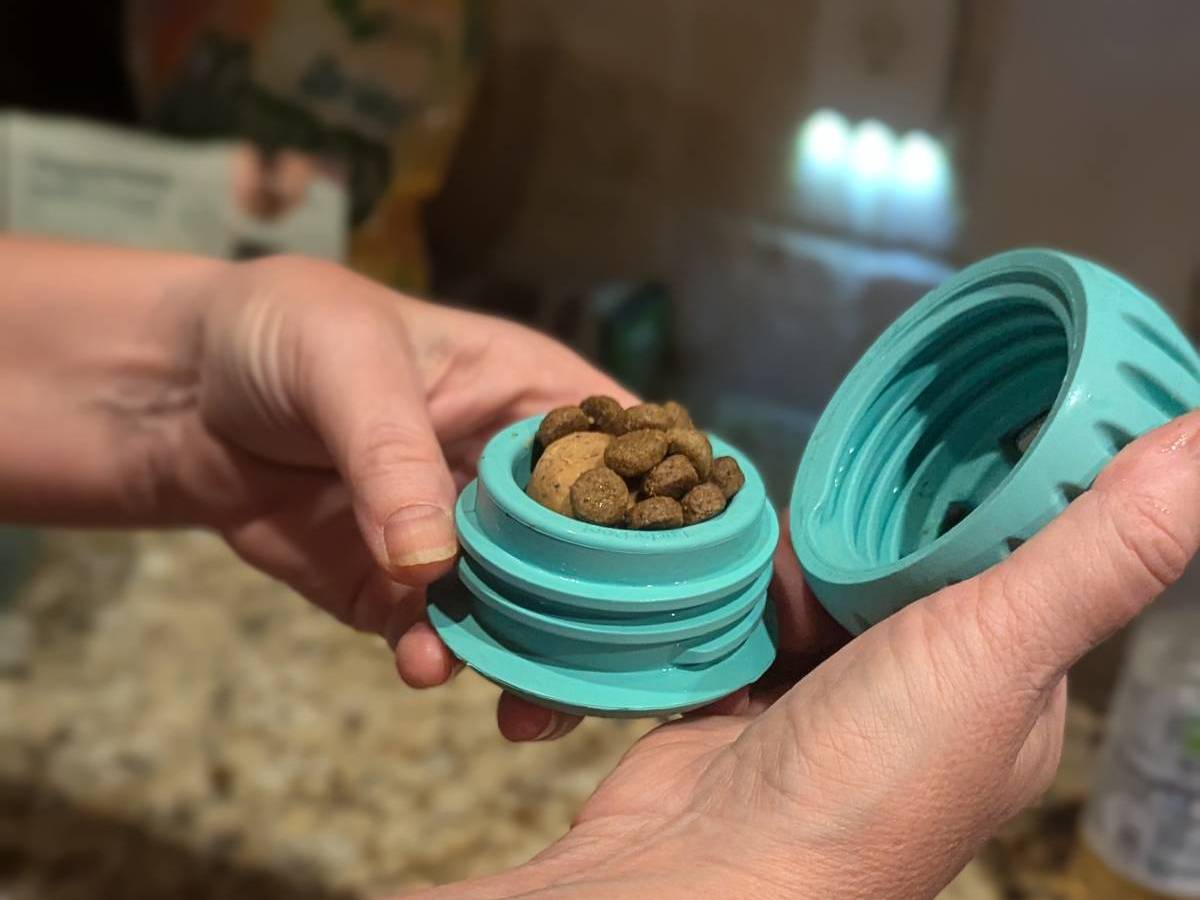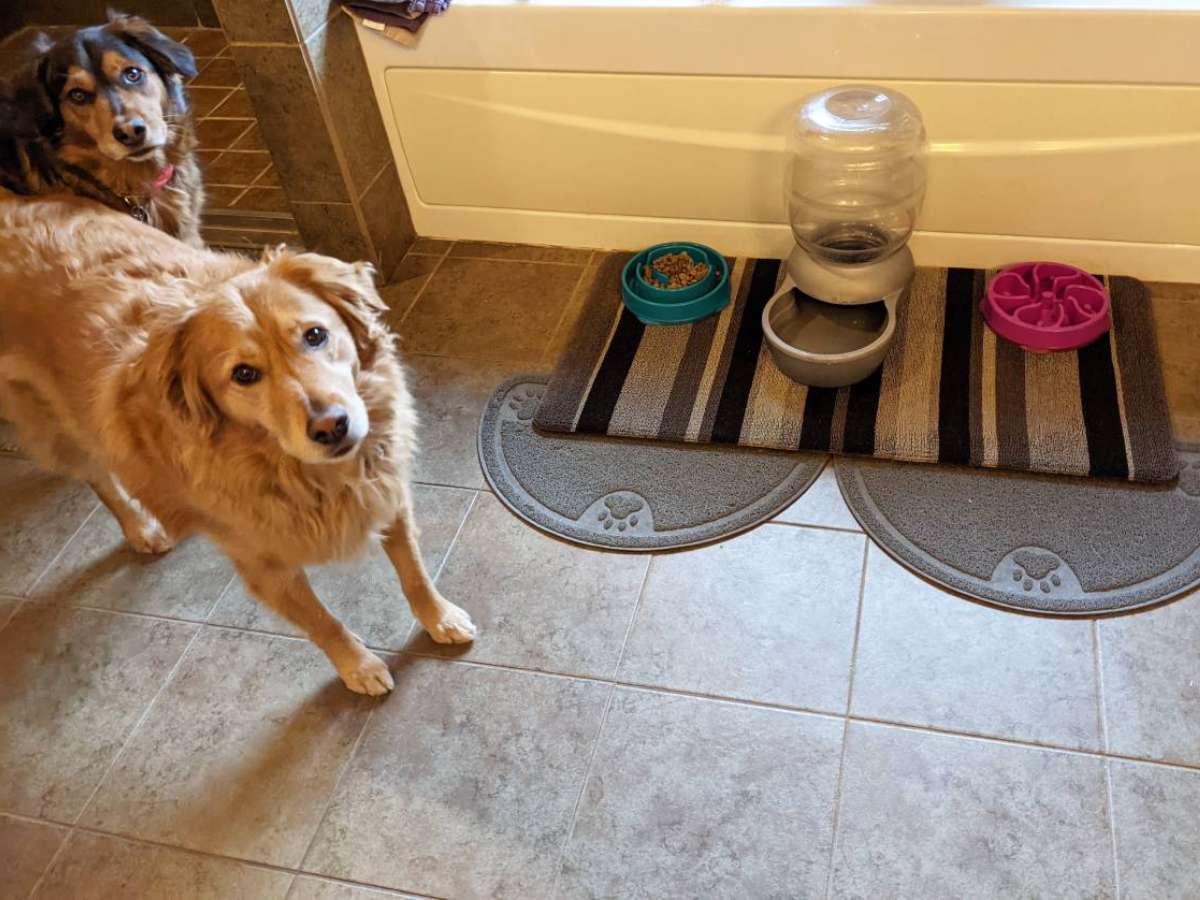Who is really the boss in your home… You, or your dog?
If you’ve got more than one dog, which one is the top dog?
You need to know this.
We learned it the hard way… after one of our dogs got a little bit out of line.
Some experts in the field taught us how to communicate to him in terms of dog packs and hierarchies. It was recommended that we show him that we are the “Alpha dog” — at all times — not him!
If you have more than one dog in the family, it is important to acknowledge (in front of your dogs) the dogs’ own pack hierarchy.
- Alpha – leader of the pack
- Beta – next in charge
- Omega – bottom of the pack
It is also important that you make it clear to all dogs in your household that YOU are the real Alpha dog at all times.
To maintain control over your dog, you need to dominate every aspect of the dog’s life.
—Ron Hines, DVM PhD
Simple Ways To Show Your Dog Who’s In Charge
There are 3 rules of thumb:
1. Your dog should never get anything for free.
2. Never let your dog dominate you.
3. Always reward your dog’s positive behaviors and ignore (or deny rewards) for negative behaviors.
Must read: How To Be The Alpha Dog Of Your Pack
How To Prove To Your Dog That You’re The Boss
Do these things any time when you and your dog are interacting together:
- When you play tug of war, do not let your dog end up with the ball or rope when you are finished.
- When you feed your dog, do not let him eat until you command him to come.
- Before you pet your dog, make him sit at attention first.
- Do not let your dog jump up on you in his excitement to see you. Instead, lightly “knee” him in the chest and make him sit before receiving any praise, a pat on the head, or a treat.
- Do not feed dominant-prone dogs from the table.
- Do not let dominant-prone dogs sleep in your bed.
- Before going outside, make your dog sit near the door first.
- Before putting on his leash, make him sit calmly first.
- Before entering or exiting the car, make him sit calmly first.
Another positive behavior that should be rewarded is “submission”…
Signs Of Submission
These are some of the submissive things your dog will do in the presence of people or other dogs:
- lying their ears back on their head
- licking their lips
- repeatedly sticking out their tongue when approaching
- rolling over and lying on their back
- avoiding eye contact
- tucking the tail between their legs
- being in a playful position: front paws on the ground, rear end up in the air
Signs of Dominance
Any time your dog displays “dominant” behavior toward you, it should be ignored. These things signify that your dog is attempting to be dominant over people or other dogs:
- posturing, “bumping”, rubbing shoulders, or “body blocking”
- standing still and on alert (usually with the tail in the air)
- growling (even softly)
- “humping”
- looking eye-to-eye
- moving in between 2 people, 2 dogs, or another dog and a person
Remember, it is immensely important that you be totally consistent with your behavior and rewards if you want your dog to be consistent with his.
Here’s another way to tell friendly behavior from unfriendly behavior in dogs.

How To Reprimand An Alpha Dog
As I alluded to in an earlier article about our Alpha dog who was overly protective of the Omega dog, there will be times when you must remind your dog who’s boss.
During those times when you must reprimand the Alpha dog, be sure to correct him boldly and forcefully — just as he would correct the Beta dog. There should never be any question as to who is the real leader of the pack in this household.
Our Alpha dog is an 80-pound Black Lab/Golden Retriever mix. He’s a handful, to say the least, and he could certainly pull his weight around here if we let him. Fortunately, due to early training when he was a puppy (and repeated “refresher courses”), we’ve managed to maintain some semblance of control over him. For the most part, we can put a stop to any unwanted behavior with a simple “No!”
However, after we introduced a new puppy into our home (now 3 dogs and counting), Destin became a little more strong-willed at times, and it would take a few repeated “No’s” to regain control of the situation, followed by an immediate “sit” — at which point we were certain that we had his full attention.
How To Get An Alpha Dog To Mind You
Sometimes, it’s necessary to make it clear to the Alpha dog who’s really in charge here: you. However, an Alpha dog may not always be willing to freely give up control of the situation on command.
In fact, a few times with Destin it became necessary to physically pull him off of the new puppy that he was being too rough with. (These are times when he was trying to teach the puppy how to be submissive.)
It’s a natural behavior, but sometimes it just went too far, causing the puppy to whimper and/or belt out a series of loud yelps — out of fear more than anything else.
Quite frequently, the puppy will be vigorously yelping or crying and on close inspection not so much as a scratch will be found. The puppy must figure out its rank with its new dog family.
~ Source
Unfortunately, such whimpers and yelps would only heighten Destin’s anxiety during those times, and his protective nature kicked into high gear. He became quite forceful toward the little puppy whenever the puppy showed fear. As a result, we had to physically pull Destin off the puppy a handful of times.
As I said, Destin is a big dog. But this one trick has always worked like a charm…
Simply grab the Alpha dog by the back of the neck and hold onto that huge chunk of fur and skin while quickly pulling him “up and back” and into a “sit” position. At the same time, hover over the Alpha dog, clearly showing who’s the boss in this situation. Your aim is not to hurt the dog, just to quickly put him in his place.





